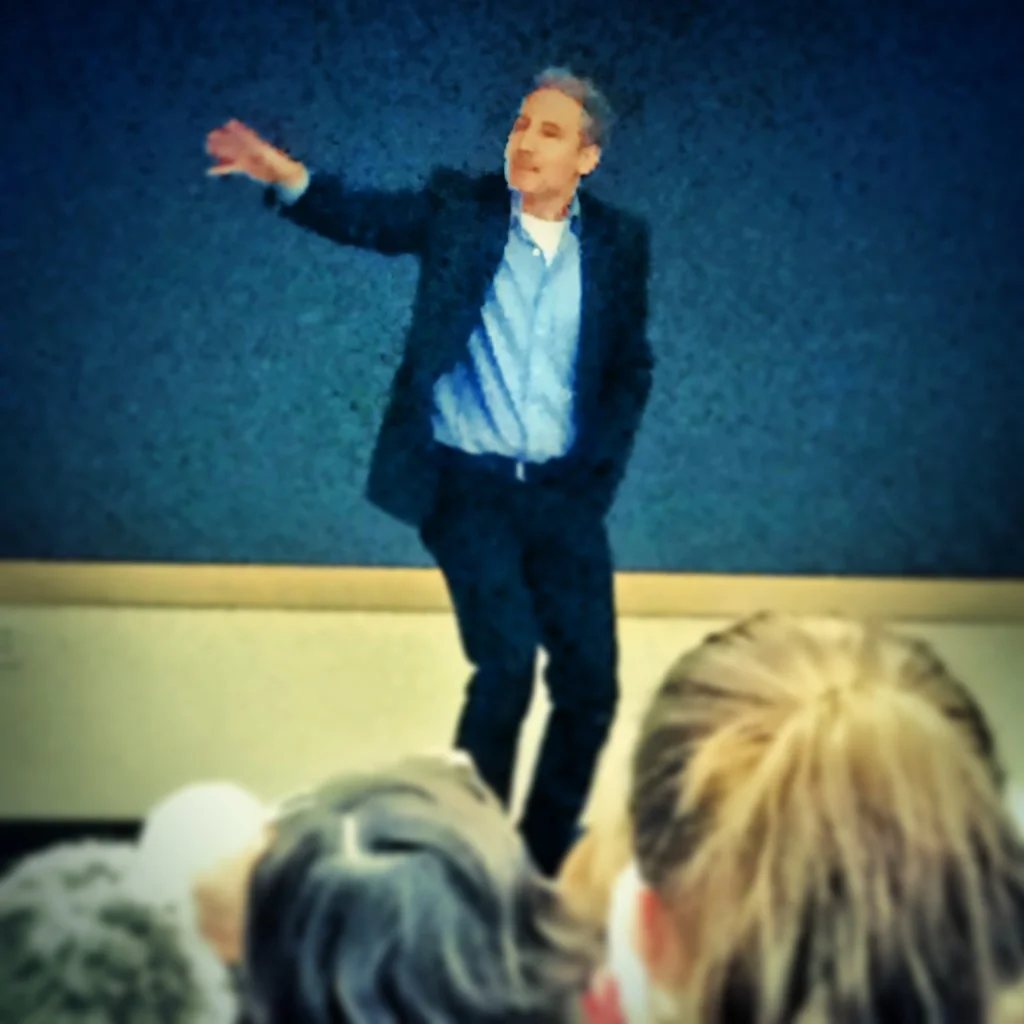On Thursday, December 5, I went to the free Discover Science Lecture Series at the University of Nevada, Reno. This is a wonderful series. In the past I've seen Neil DeGrasse Tyson, Bill Nye (I first saw Bill Nye as "Speed Walker" on Almost Live in Seattle back in the early 90s) and Michio Kaku. For this academic year there are two other speakers yet to present (Alan Krause and Robert Ballard). I'm looking forward to them!
Brian Greene is a professor at Columbia University. Read about him on his home page and on Wikipedia, the source of all knowledge.
Why Science Matters
This was my first time hearing Greene speak and I was hoping for some great string theory discussion, similar to his several books. I've read all of them and wanted more of the same. When I saw the title I figured the lecture would be more about science advocacy and teaching. Those are worthy subjects, indeed, but I'm hearing a celebrity scientist for the first time and I want to hear the top hits! Well, I wasn't disappointed.
The talk began with Greene briefly stating that science education and science literacy are beneficial to everyone. It makes us better able to understand the news of the world concerning things like climate change and fruit fly research. A populace educated in science will naturally be better critical thinkers and will ask the important questions before making an informed decision. He also stressed the importance of questioning established scientific claims because they aren't always right on the mark.
Greene went on to illustrate his point using three stories from the world of science. Now I get my string theory! I won’t go into them, but the stories were about famous scientists going against conventional wisdom because they thought the theory didn’t make sense. Newton and gravity, Einstein and relativity, and multiverse string theory. Good stuff.
I just have to talk about the latest research about black holes and multiverse concepts for a moment because it was really interesting stuff. I’m relaying this a week later, off the top of my head, so if I get something wrong, well, dammit Jim, I’m an archaeologist, not a theoretical astrophysicist!
So, black holes. Nothing that goes in ever comes back out again, right? Sort of. First, Hawking radiation dissipates a black hole so something does actually get out. But, that’s not what Greene is talking about. He says that when a trowel, for example, goes into a black hole, the information that could “re-make” that trowel is stored at the event horizon. The trowel is destroyed in the black hole (or sent through a worm hole which is an entirely different discussion). The information to create the trowel, however, is on the event horizon.
Here is another way to think of it. The event horizon is two dimensional. It’s flat. The trowel is three dimensional, like us and everything around us. The 3D trowel is sent into the black hole and the information to create it is stored as 2D. Think of those shiny foil holograms that have been around for a while. When you look at them just right they look like a 3D image. That image is created from 2D information.
Why is this important? It has to do with dimensions beyond the usual three. If 2D information can be projected as a 3D image, then, 3D information should be projectable into 4D. So, 4D should be projectable into 5D, and so on. It’s a possible way for us to see into extra dimensions. We just need to figure out what type of projector to use. Amazon? Bezos is smart, but not that smart. We’ll have to wait for Elon Musk to invent it.
Implications for Archaeological Theory
The talk was called “Why Science Matters”. Why does science matter? It matters because if you don’t have a solid science background you’ll have a difficult time asking the right questions about things around you. Science isn’t always right. It’s usually more right than most things, but, sometimes a theory needs some tweaking. The same is true for long-held archaeological beliefs.
For a long time archaeologists thought, based on existing evidence, that North America was settled shortly after the end of the last ice age. That date keeps getting pushed further and further back as more solid evidence is found. Here’s another example. Paleoanthropological phylogenetic trees are re-written every time something new is found. Each time, the scientist in question says we’ve found a new human ancestor and this time we’ve got it right! Yeah. Not so much.
Concepts in science are constantly in flux. Every day brings new discoveries and new information. We should all be looking at what we think we know and ask, “is there a better way?” Or, “do I really understand this?” Don’t assume that what you read in that book or that paper is absolute fact. Ask questions and test your own hypothesis.
If you get a chance to see Brian Greene speak, take it. He’s a great, dynamic speaker and you won’t be disappointed.
Now back to your regularly scheduled archaeology posts.
Thanks for reading and I’ll see you in the Verse!

